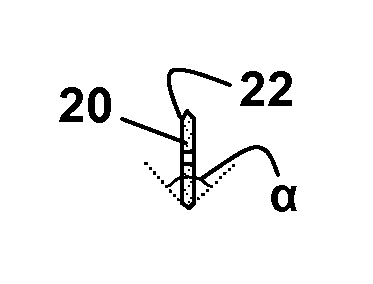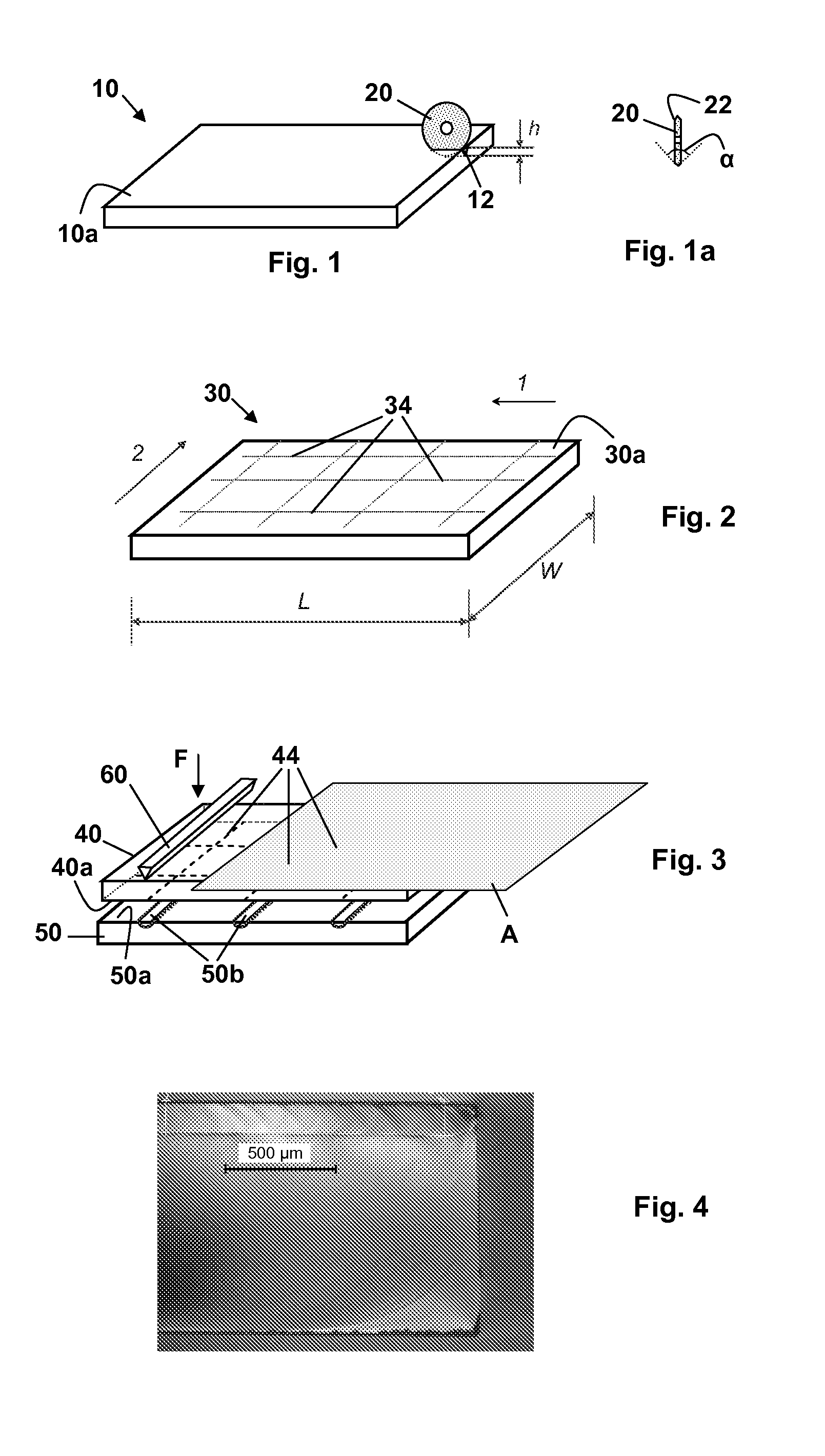Mechanical scoring and separation of strengthened glass
a technology of reinforced glass and mechanical scoring, which is applied in the direction of paper/cardboard containers, manufacturing tools, transportation and packaging, etc., can solve the problems of time-consuming and expensive procedures, mechanical methods and processes for cutting glass sheets, and the kind of thin drawn glass sheets used for small objects, and achieve the effect of improving separation efficiency
- Summary
- Abstract
- Description
- Claims
- Application Information
AI Technical Summary
Benefits of technology
Problems solved by technology
Method used
Image
Examples
example
[0050]Two strengthened glass sheet types are selected for processing. Both samples comprise Corning Gorilla® Glass sheet of 1.1 mm sheet thickness. One sheet sample incorporates surface compression layers of 30 μm thickness and a surface compressive stress level of 750 MPa, with a calculated sheet center tension of 33 MPa. The other sheet incorporates surface compression layers of 36 μm thickness and a surface compressive stress level of 625 MPa, also with a calculated sheet center tension of 33 MPa.
[0051]Sheets of these two glasses, each 370 mm by 470 mm in size are selected for sectioning into four equally sized smaller sheet segments, each segment to be 135 mm×235 mm in size. For that purpose each sheet is mechanically scribed in accordance with the procedure below utilizing a commercial abrasive glass cutting machine, i.e., a Gen-3 TLC Phoenix-600® glass cutting machine commercially obtained from TLC International, Phoenix, Ariz., USA. The abrasive cutting wheel used for scoring...
PUM
| Property | Measurement | Unit |
|---|---|---|
| thickness | aaaaa | aaaaa |
| compressive stress | aaaaa | aaaaa |
| taper angle | aaaaa | aaaaa |
Abstract
Description
Claims
Application Information
 Login to View More
Login to View More - R&D
- Intellectual Property
- Life Sciences
- Materials
- Tech Scout
- Unparalleled Data Quality
- Higher Quality Content
- 60% Fewer Hallucinations
Browse by: Latest US Patents, China's latest patents, Technical Efficacy Thesaurus, Application Domain, Technology Topic, Popular Technical Reports.
© 2025 PatSnap. All rights reserved.Legal|Privacy policy|Modern Slavery Act Transparency Statement|Sitemap|About US| Contact US: help@patsnap.com



